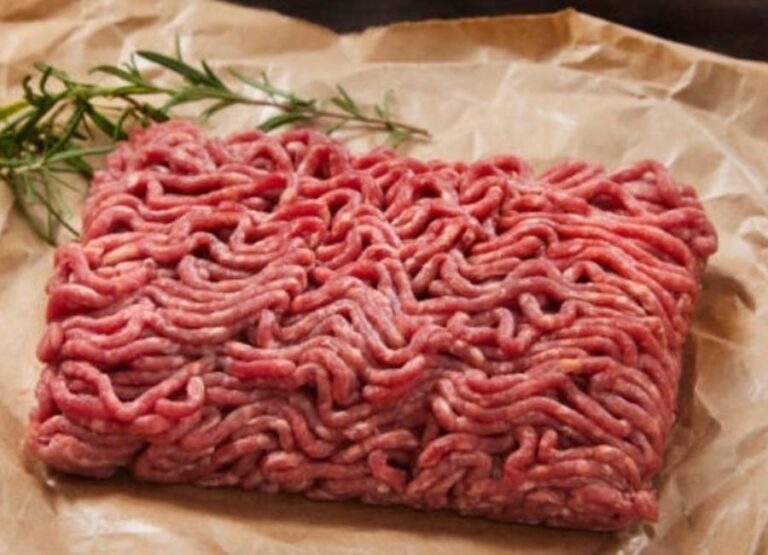Dealing With Food Poisoning From Lunch Meat
Today, we’re tackling a serious topic that might surprise you: food poisoning from lunch meat. Yes, you heard it right.
That seemingly harmless sandwich filler can sometimes pack a not-so-friendly punch.
So, let’s dig into the nitty-gritty of lunch meat safety to keep both you and your family healthy and happy.
Food Poisoning From Lunch Meat
Food poisoning from lunch meat can be a serious and unpleasant experience.
Consuming contaminated or improperly stored lunch meat can lead to symptoms such as nausea, vomiting, diarrhea, and stomach cramps.
It is important to handle and store lunch meat properly to prevent bacterial growth and contamination.
Food poisoning from lunch meat can happen when it’s not stored properly or if it’s past its expiration date.
Remember to always refrigerate your lunch meat and check the labels for freshness.
If you suspect that you have food poisoning from lunch meat, it is crucial to seek medical attention and report your symptoms to the appropriate authorities.
Causes of Food Poisoning from Lunch Meat

Here are some of the major causes of food poisoning from lunch meat:
1. Bacterial Contamination
Bacteria such as Salmonella, Listeria, and E. coli can contaminate lunch meat during processing, handling, or storage. These bacteria can cause illness when consumed.
Salmonella is commonly found in poultry products and can contaminate lunch meat if proper food safety practices are not followed.
Listeria can grow at refrigeration temperatures and is particularly dangerous for pregnant women, older adults, and individuals with weakened immune systems.
E. coli is a bacteria that can cause severe illness, especially if the lunch meat is undercooked or contaminated during processing.
2. Improper Storage
Lunch meat should be stored at a temperature below 40°F/4°C to prevent bacterial growth.
If the temperature is too high, bacteria can multiply rapidly, increasing the risk of food poisoning.
It’s important to keep lunch meat refrigerated and consume it within the recommended time frame to minimize the chances of bacterial contamination.
3. Cross-Contamination
Cross-contamination occurs when bacteria from raw meat or other contaminated surfaces come into contact with lunch meat.
For example, using the same cutting board or knife for raw chicken and lunch meat without proper cleaning can transfer harmful bacteria.
It’s crucial to practice good hygiene and use separate utensils and surfaces for raw and ready-to-eat foods to prevent cross-contamination.
4. Inadequate Cooking
While most lunch meats are ready-to-eat, some people prefer to heat them before consumption.
Inadequate cooking or reheating can be a cause of food poisoning.
If the lunch meat is not heated to the right temperature (above 165°F/74°C), any bacteria present may not be killed off, leading to potential illness.
It’s essential to follow proper cooking or reheating guidelines to ensure the meat is safe to eat.
5. Lengthy Storage
Lunch meat should be consumed within the recommended time frame to minimize the risk of bacterial growth.
If lunch meat sits in the refrigerator for too long, bacteria can multiply, increasing the chances of food poisoning.
Always check the expiration date and follow the storage guidelines provided by the manufacturer to ensure the safety of the lunch meat.
By understanding these major causes of food poisoning from lunch meat and taking the necessary precautions, such as proper storage, handling, and cooking, you can reduce the risk of falling victim to a lunch meat-related illness.
Common symptoms of food poisoning from lunch meat
Here are some of the major symptoms of food poisoning from lunch meat:
- Nausea and Vomiting: When you consume contaminated lunch meat, your body may react by feeling nauseous and inducing vomiting. This is a defense mechanism as your body tries to expel the harmful bacteria or toxins that have entered your system.
- Abdominal Pain and Cramps: Food poisoning from lunch meat can cause abdominal pain and cramps. These discomforts occur due to the inflammation in your digestive system as it tries to deal with the presence of harmful bacteria or toxins.
- Diarrhea: Diarrhea is a common symptom of food poisoning. Consuming contaminated lunch meat can lead to an overactive digestive system, resulting in loose, watery stools and frequent trips to the bathroom. It’s important to stay hydrated to avoid dehydration.
- Fever and Chills: Food poisoning can sometimes cause your body temperature to rise, leading to fever and chills. This is a sign that your body is fighting off an infection caused by the contaminated lunch meat. Monitoring your temperature and seeking medical attention if necessary is important.
- Fatigue and Weakness: Dealing with food poisoning can be exhausting for your body. It requires a lot of energy to fight off the harmful bacteria or toxins. As a result, you may experience fatigue and weakness. It’s crucial to listen to your body and give it the rest it needs. If your symptoms worsen or persist, it’s advisable to consult a healthcare professional.
Remember, these symptoms can vary in severity and duration depending on the specific bacteria or toxins involved.
If you suspect food poisoning from lunch meat, it’s always a good idea to seek medical advice for proper diagnosis and treatment.
Tips for reducing the risk of food poisoning from lunch meat
Here are some of the most effective tips for reducing the risk of food poisoning from lunch meat:
1. Choose fresh and reputable brands: Opting for well-known brands is important because they typically have established quality control measures in place. These brands often prioritize food safety and have strict standards for sourcing, processing, and packaging their lunch meat products. Their reputation is built on delivering fresh and safe products to consumers, making them a reliable choice.
2. Check the expiration date: Checking the expiration date is crucial to ensure that the lunch meat you purchase is still within its safe consumption period. Expired meat can harbor harmful bacteria and toxins that can cause food poisoning. Always look for the expiration or “use by” date on the packaging and avoid purchasing or consuming lunch meat that has passed its expiration date.
3. Proper storage: After buying lunch meat, it’s important to handle and store it properly to maintain its freshness and prevent bacterial growth. Refrigerate the lunch meat immediately, as it is a perishable product. Keep it at temperatures below 40°F (4°C) in the refrigerator to slow down bacterial growth. Placing the lunch meat in a separate container helps prevent cross-contamination with other foods and reduces the risk of bacteria spreading.
4. Thoroughly cook reheated meat: If you plan on reheating lunch meat, it’s essential to ensure it is cooked thoroughly. Reheating kills any potential bacteria that may have multiplied during storage. Use a food thermometer to check if the internal temperature of the meat reaches at least 165°F (74°C). This ensures that any harmful bacteria are destroyed, minimizing the risk of foodborne illnesses.
5. Wash your hands: Proper hand hygiene is crucial when handling food, including lunch meat. Before touching lunch meat or any related utensils or surfaces, wash your hands thoroughly with warm water and soap for at least 20 seconds. This step helps remove any bacteria or contaminants present on your hands, reducing the risk of cross-contamination.
6. Clean utensils and surfaces: To prevent cross-contamination, it’s important to clean all utensils, cutting boards, and surfaces that come into contact with lunch meat. Use hot, soapy water to wash these items thoroughly after each use. Pay special attention to cutting boards, as they can harbor bacteria. Consider using separate cutting boards for raw and cooked foods to avoid any potential transfer of harmful bacteria.
7. Limit time at room temperature: Lunch meat should not be left out at room temperature for more than two hours. Bacteria can multiply rapidly in the “danger zone” temperature range of 40°F to 140°F (4°C to 60°C). To reduce the risk of bacterial growth, keep lunch meat chilled and refrigerated. If the meat has been sitting out for more than two hours, it’s safer to discard it.
8. Avoid unpasteurized products: Pregnant women, young children, and individuals with weakened immune systems should avoid consuming unpasteurized lunch meat products. Unpasteurized products may contain harmful bacteria such as Listeria monocytogenes, which can cause severe illness, particularly in vulnerable populations. Opt for pasteurized lunch meat products to minimize the risk of foodborne infections.
9. Use your senses: Trust your senses of sight, smell, and touch when assessing the freshness of lunch meat. If the lunch meat looks discolored, has an off smell, or exhibits an unusual texture, it’s better to err on the side of caution and discard it. These signs could indicate spoilage or the presence of harmful bacteria. Always prioritize your health and safety by avoiding any questionable lunch meat.
By following these detailed tips, you can significantly reduce the risk of food poisoning from lunch meat.
Practicing proper food handling, storage, and hygiene measures ensures that you can enjoy your lunch meat safely and without any concerns.
Dealing with Food Poisoning from Lunch Meat: Steps, Treatment, and Recovery

Dealing with food poisoning is never fun, and suspecting it from lunch meat can be quite alarming.
Here’s a guide to dealing with food poisoning from Lunch Meat:
1. Steps to take if you suspect food poisoning from lunch meat
First things first, if you suspect food poisoning from lunch meat, there are a few steps you can take to ensure your well-being:
a. Hydrate: Sip on clear fluids like water, herbal tea, or broths to prevent dehydration.
b. Rest: Allow your body to recover by getting plenty of rest. Take it easy and listen to what your body needs.
c. Remove the source: Discard any remaining lunch meat to prevent further exposure and potential contamination.
d. Track symptoms: Monitor your symptoms closely and make note of any changes or worsening conditions. This will be helpful when seeking medical attention.
2. When to seek medical attention
While most cases of food poisoning resolve on their own within a few days, it’s important to know when to seek medical attention:
a. Severe symptoms: If your symptoms are severe or persist for more than a few days, it’s best to consult a healthcare professional.
b. High-risk individuals: If you are pregnant, elderly, have a weakened immune system, or any underlying health conditions, it’s crucial to seek medical attention promptly.
c. Dehydration: If you experience signs of dehydration such as excessive thirst, dry mouth, or decreased urine output, it’s important to consult a doctor.
3. Treatment options for food poisoning from lunch meat
When it comes to treating food poisoning from lunch meat, the main goal is to alleviate symptoms and aid in recovery.
Here are some common treatment options:
a. Rehydration: Drinking plenty of fluids, especially those containing electrolytes, helps to replenish lost fluids and minerals due to vomiting or diarrhea.
b. Medications: Over-the-counter medications like anti-diarrheals or anti-nausea drugs may be recommended by a healthcare professional to relieve symptoms.
c. Probiotics: Consuming probiotics, such as yogurt or supplements, can help restore the balance of healthy bacteria in your gut.
4. Recovery process and recommended diet post-food poisoning
Once the worst is over, it’s time to focus on the recovery process and a recommended diet. Here’s what you can do:
a. Gradual reintroduction: Start with bland, easily digestible foods like bananas, rice, toast, and applesauce. Slowly reintroduce other foods as your stomach tolerates them.
b. Hygiene and food safety: Practice proper food safety measures, such as washing your hands thoroughly before handling food and cooking meals at appropriate temperatures, to prevent future episodes.
c. Balanced and nourishing diet: As you recover, aim for a balanced diet rich in fruits, vegetables, lean proteins, and whole grains to support your body’s healing process.
Frequently Asked Questions
What is food poisoning from lunch meat, and how does it happen?
Food poisoning from lunch meat occurs when the meat is contaminated with harmful bacteria such as Listeria, Salmonella, or E. coli. These bacteria can multiply in the meat if it’s not stored or handled properly, leading to illness when consumed.
What are the symptoms of food poisoning from lunch meat?
Symptoms may include nausea, vomiting, diarrhea, stomach cramps, and in more severe cases, fever and muscle aches. If you experience these symptoms after consuming lunch meat, it’s important to seek medical attention.
How can I prevent food poisoning from lunch meat?
To prevent food poisoning, it’s crucial to store lunch meat at the proper temperature, which is below 40°F (4°C). Additionally, always follow the expiration date, and if the lunch meat has a strange odor or color, it’s best to discard it. Proper handwashing and cleanliness in food preparation are also essential.
Can pregnant women eat lunch meat without risking food poisoning?
Pregnant women are advised to avoid eating deli meats and other ready-to-eat meats unless they are heated to an internal temperature of 165°F (74°C) to kill any potential bacteria. Listeria, in particular, can pose serious risks to pregnant women and their unborn babies.
Is it safe to eat lunch meat that has been left out at room temperature?
No, it’s not safe to consume lunch meat that has been left out at room temperature for more than 2 hours (1 hour if the temperature is above 90°F or 32°C). Bacteria can grow rapidly at room temperature, increasing the risk of food poisoning.
What should I do if I suspect I have food poisoning from lunch meat?
If you suspect you have food poisoning from lunch meat, it’s important to stay hydrated and seek medical attention if symptoms are severe or persistent. You should also report the illness to your local health department, especially if you believe the lunch meat is the source of the contamination.
Conclusion
In conclusion, food poisoning from lunch meat is a serious health concern that should not be taken lightly. The bacteria commonly found in lunch meat, such as Listeria monocytogenes, can lead to severe illness, especially in vulnerable populations like pregnant women, the elderly, and individuals with weakened immune systems. To minimize the risk, it is crucial to handle and store lunch meat properly, ensuring it is refrigerated at the appropriate temperature and consumed within the recommended timeframe. Additionally, practicing good hygiene, such as washing hands thoroughly before and after handling lunch meat, is essential for preventing foodborne illnesses.



![How Long To Thaw Ribs in Refrigerator [24 Hours?]](https://foodcreeks.com/wp-content/uploads/2023/05/How-Long-To-Thaw-Ribs-in-Refrigerator-768x555.jpg)


![Can You Get Sick From Eating Old Hot Dogs [Hints]](https://foodcreeks.com/wp-content/uploads/2023/05/Can-You-Get-Sick-From-Eating-Old-Hot-Dogs-768x555.jpg)
![Can Freezer Burned Meat Be Eaten [Answered]](https://foodcreeks.com/wp-content/uploads/2023/02/Can-Freezer-Burned-Meat-Be-Eaten-768x555.jpg)